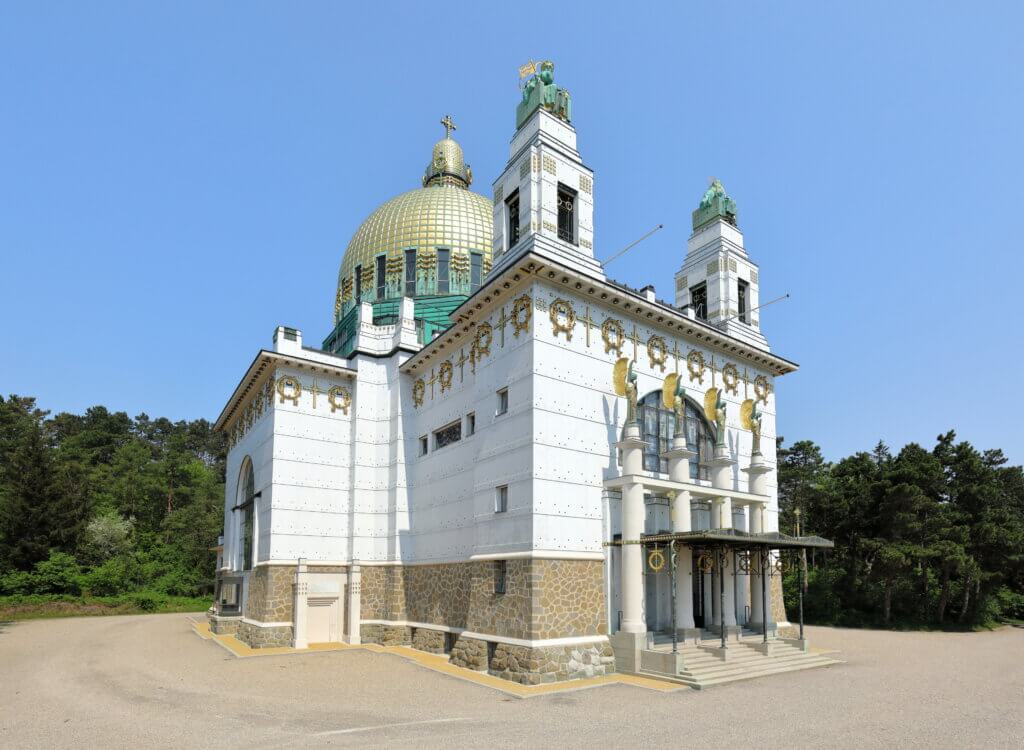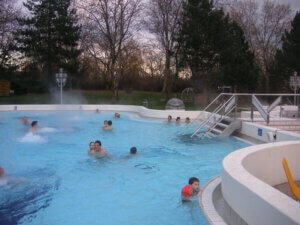When did Art Nouveau experience its heyday in Europe? Where are its roots? Why is it called that? Why is this style called Secession in Vienna? Which Viennese building can be called a masterpiece of Art Nouveau?
The rootsofArt Nouveau lie in theEnglish“Arts and Craft” movement, which was a response to the industrialization of the 19th century . In England in particular, industrialization began as early as the
- their beginning. The aim was to preserve the artisan tradition and not to fall completely prey to mass production.
The idea was that art and craft are not mutually exclusive. A craft should be functional , but also not lack a certain aesthetic . In addition, the arts and crafts should also Give pleasure. In which areas? Architecture, painting, sculpture, furniture design, jewelry, glass etc. Nature as a shaper was obvious.
How to recognize the Art Nouveau style?
- Floral decoration (flowers)
– Geometric shapes
- Flowing lines
– Symbolic figures (e.g. eagle, owl, lion)
Art Nouveau experienced its heyday from around 1890 to 1910 and in Germany it became known as Jugendstil, named after the Munich art magazine “Die Jugend”. In the rest of Europe, the art style is called “Art Nouveau” . In Austria, and in Vienna in particular, it is also called Secession style – after the split of the artists in 1897 from the traditional hitherto prevailing style of historicism. This culminated in the construction of the Vienna Secession, an exhibition house whose first president was Gustav Klimt . The forms and modes of expression also differed throughout Europe. While Art Nouveau was dominated by more floral playful forms (e.g. in Parisian architecture), Vienna was more dominated by geometric, angular art nouveau. Vienna developed its own formal language in art and architecture, which today is present in the museums and streetscape. Viennese Art Nouveau played an important role in painting, furniture design and architecture . Let us first devote ourselves to the Painting, graphics, poster design, stage design and illustration. Gustav Klimt, Egon Schiele, Oskar Kokoschka, Richard Gerstl, Franz Matsch, Carl Moll, Max Kurzweil, Alfred Roller were the most famous representatives of Art Nouveau in Austria . The works of the painters can be admired in numerous Viennese museums(Belvedere, Leopold Museum, Vienna Museum, Secession, Klimt Villa). When it comes to furniture design , the Museum of Applied Arts (MAK) immediately comes to mind. Here you can admire the most beautiful pieces of the Wiener Werkstätte . This was founded in 1903 by Josef Hoffmann, Koloman Moser and Fritz Wärndorfer , went bankrupt in 1932, but you can see the works nowadays in the MAK. You can also be impressed by Viennese Art Nouveau in the Leopold Museum and the Imperial Furniture Collection . In architecture , Art Nouveau is most present in Vienna . A pioneer in this field was Otto Wagner . No one else broke with tradition and shaped the city as much as he did. Much of has been preserved and is a listed building. If Emperor Franz Joseph had not been so conservative, we would have even more Art Nouveau buildings in Vienna. Otto Wagner was only able to realize about half of his plans. Let’s start at the ring road. The Vienna Post Office Savings Bank is a typical example of the new Art Nouveau style of construction. The building stands exactly opposite the former Ministry of War, which was built in the “old historicist style”. The differences could hardly be presented more strikingly. Near the city park we see pavilions that clearly remind us of Otto Wagner . In general, you can assume Otto Wagner as the architect for the colors white, green and gold . At Karlsplatz we see more buildings by Otto Wagner . His two beautifully decorated pavilions . One serves as a café, the other is dedicated to Otto Wagner and bears witness to his work. The Secession (the white building with the golden laurel leaves) already shines in the distance and attracts both Art Nouveau and Beethoven fans . In the basement there is the Beethoven frieze by Gustav Klimt. Incidentally, the architect of the building was Joseph Maria Olbrich. Along Linke Wienzeile you will find the former residences of Otto Wagner, where he erected a monument to himself . The two house facades next to each other with their gilded ornaments and colorful majolica tiles are enchanting to look at. There is also a roof extension by Otto Wagner on Wiener Graben . The former Stadtbahn and its stations (today U6, U4, S45) were also designed by Otto Wagner . His masterpiece is certainly the church at Steinhof . It is located on the grounds of the psychiatric hospital Baumgartner Höhe . The details are fascinating and can be visited in the course of guided tours. Although the church is Catholic, it does not belong to the archdiocese, but to the municipality of Vienna. The church was controversial from the beginning. At the opening in October 1907, Emperor Franz Joseph had immediately excused himself and sent his nephew Archduke Franz Ferdinand instead. According to an anecdote, the latter is said to have said to Otto Wagner that the Theresian style of construction was still the most beautiful. In response, Wagner said: In the time of Maria Theresa, the cannons were also decorated, but today they would be more effective. After that, Wagner is said to have received no more commissions from the imperial house. The anchor clock by Franz Matsch is an important work of Art Nouveau art on the Hohe Markt . For the purchase of glass art objects , a visit to J. & L. Lobmeyr (glass art) on Kärntner Straße is recommended. In the Loos Bar at the Kärntner Durchgang you can drink cocktails in an art nouveau ambience, if you can find a seat. The bar measures only 4x6m and is always crowded. Adolf Loos with the famous Loos House on Michaelerplatz is sometimes also counted as part of Art Nouveau, although his works could be attributed more to his own Loos style .
The end of Art Nouveau in Austria can be dated to the end of the First World War. 1918 saw the collapse of the monarchy and was also the year in which four important Art Nouveau artists died : Otto Wagner, Gustav Klimt, Koloman Moser and Egon Schiele all died in 1918. Time Travel Tip:In Vienna, you will encounter Art Nouveau at every turn. It’s worth keeping your eyes open and looking up. A visit to the Art Nouveau toilet on Graben is something special. It is just around the corner from Time Travel and brings the flair of the turn of the century to life in this quiet little place. Image sources: https://de.m.wikipedia.org/wiki/Datei:Penzing_(Wien)_-_Kirche_am_Steinhof_(7).JPG





